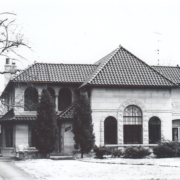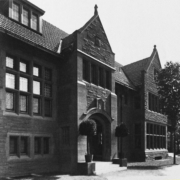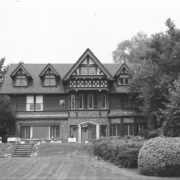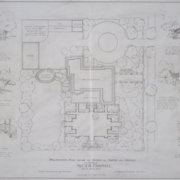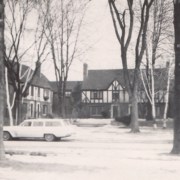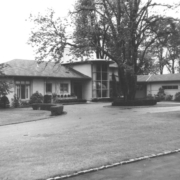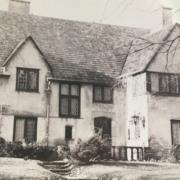Historical Architecture of Grosse Pointe – Indiana Limestone
Last week we explored 805 Trombley, a once superb limestone clad property that was located on the corner of Tombley and Essex Drive. It appears the property was completed in 1928, by the firm of C. E. Reichle Co. Designers & Builders, for Robert E. Farley, president of the Hillgartner natural stone company in Baltimore, Maryland. It was razed in 2008. This week we are going to feature some of the other homes in Grosse Pointe that use Indiana limestone as an integral part of the design, either as cladding or as trim. Limestone cladding – characterized by smooth, even faces and square edges, often several inches thick – was used to shape the aesthetic of a home. However, in many cases it was the trim, the intricate carved limestone details around the windows and doors, that played a more integral part to the overall composition.
“Native Americans were the first people to discover limestone in Indiana. Not long after they arrived, American settlers used it around their windows and doors, and for memorials around the towns. The first quarry was started in 1827.” “Indiana limestone is a more common term for Salem limestone, a geological formation primarily quarried in south central Indiana, between the cities of Bloomington and Bedford. Indiana limestone has been called the best quarried limestone in the United States.” Source Wikipedia. The Indiana Limestone Company was the largest company in the history of the Indiana limestone business.
Nationally Indiana limestone has long been part of a high-end market. It was commonly used in the construction/finishing of residences, churches, universities, museums, offices, public, and municipal buildings. Many of these buildings were designed by nationally recognized architects from the late 1800s to the mid-1900s. Source: Indiana University Bloomington. American architecture of the late 19th and early 20th century used a lot of limestone in construction, finishing, and carved intricate detailing. It was an incredibly popular material in Grosse Pointe from the turn of the century through to the 1930’s on homes, schools, and churches.
The following residences were constructed prior to 1930, they vary in size and grandeur.
575 Lake Shore – 1911-1915 – Designed by John Scott & Company for Dr. Harry N. Torrey
“Clairview” was a spectacular Italian Renaissance home designed by John Scott, an English born architect who relocated to Detroit at the turn of the century. 575 Lake Shore was constructed from brick and clad in Indiana limestone. The front elevation was dominated by the two-story-story portico supported by four grand columns. The architect, John Scott, designed the house to make a feature of the lake at the front of the home, using a series of French doors that opened to a terrace with views of the water. At the time Scott, like many of the noted architects working in the community, had started to push boundaries, and become more responsive to the surroundings. 575 Lake Shore was razed in 1959. The photo (below) is courtesy of © Indiana Limestone Company. Courtesy, Indiana Geological and Water Survey, Indiana University, Bloomington, Indiana.
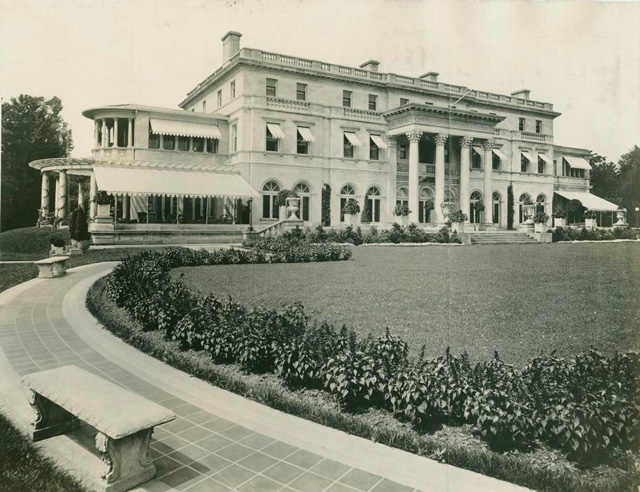
500 Lake Shore – 1915 – Designed by Albert H. Spahr for Joseph Scholtman
“Stonehurst” was an early English Renaissance “Castle”, designed by Pittsburgh architect Albert H. Spahr for Joseph Scholtman and his wife Stella Ford. The property was set on a 30-acre estate on the shores of Lake St Clair. The imposing 40-room stone mansion used Indiana limestone extensively as trim. The house was filled with superb architectural details, and beautiful decorative elements including a hand-crafted tapestry (measuring 5’ x 7’ depicting the gardens of Stonehurst that took Mrs. Scholtman 4 years to complete), paintings, and oriental rugs. 500 Lake Shore was razed in 1974. The photo (below) is courtesy of © Indiana Limestone Company. Courtesy, Indiana Geological and Water Survey, Indiana University, Bloomington, Indiana.
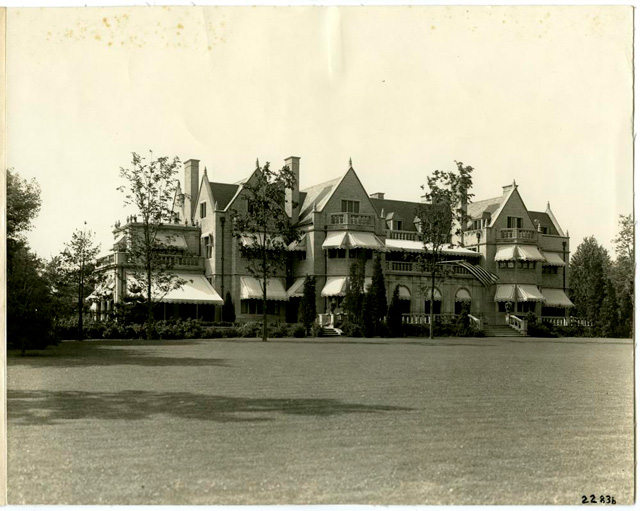
44 Beverly Road – 1916-1917 – Designed by Richard E. Raseman for William C. Crowley
Richard E. Raseman designed this striking 7,106 sq ft Renaissance Revival style property for William Cornelius Crowley, director of the Crowley-Milner Company. Crowley was a significant figure in the wholesale dry goods business in Detroit from 1882 onwards. Mr. Crowley resided in the home until his death in 1928. Eddie Rickenbaker – the World War 1 ‘”Ace of Aces”, then purchased the limestone clad house, and lived there for about one year. The first photo (below) is courtesy of © Indiana Limestone Company. Courtesy, Indiana Geological and Water Survey, Indiana University, Bloomington, Indiana.
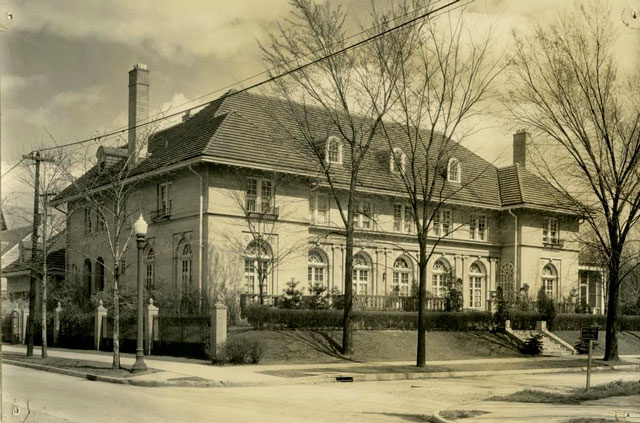
743 Pemberton – 1926 – Designed by Don M. Contrell & MacDonald for Russell Goodwillie
743 Pemberton has been described as the “Limestone Castle of Grosse Pointe Park”. The property is built from stone and clad in Indiana limestone, it has additional decorative limestone elements above the front door and the second-floor windows. The property was featured in a 1926 edition of Stone Magazine (a publication devoted to the quarrying and cutting of stone for architectural uses), “as an admirable example of a residence that used random ashlar and carved Indiana limestone.” Russell Goodwillie was a significant figure in the stone cutting industry in Detroit, his projects were often featured in publications. The first photo (below) is courtesy of © Indiana Limestone Company. Courtesy, Indiana Geological and Water Survey, Indiana University, Bloomington, Indiana.
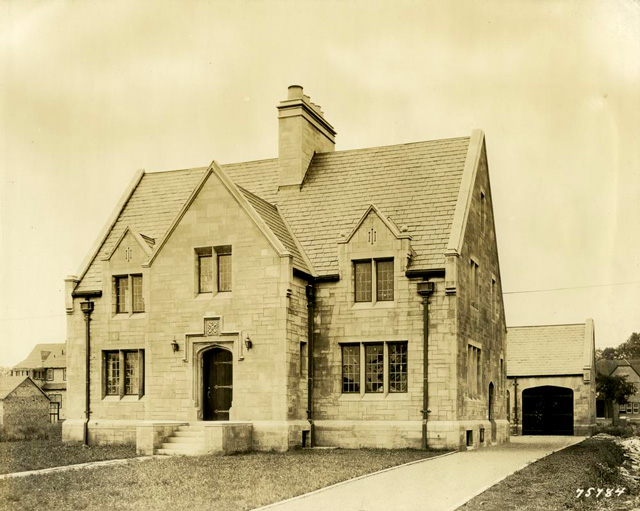
871 Balfour – 1927 – Architect not known
This Tudor style residence was constructed from brick and features limestone trim around the front door and the two-story bay windows on the front elevation. The first photo (below) is courtesy of © Indiana Limestone Company. Courtesy, Indiana Geological and Water Survey, Indiana University, Bloomington, Indiana.
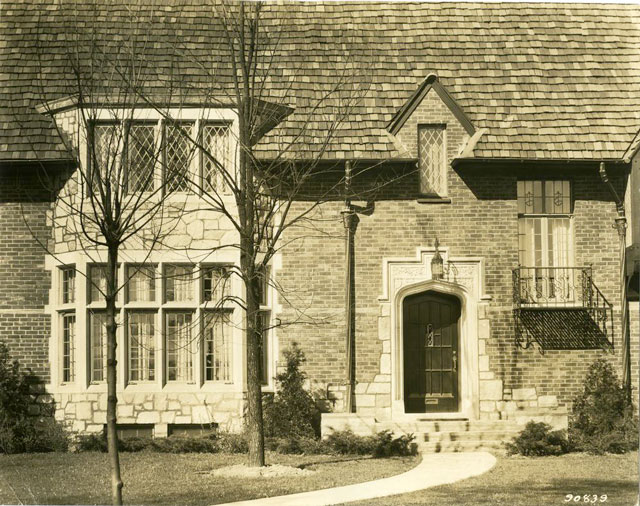

805 Trombley – 1928 – designed by C. E. Reichle Co. Designers & Builders, for Robert E. Farley
The 3,000 sq ft residence was constructed from stone and finished in 4” old gothic random ashlar. The property was “the first home in Detroit built of shot sawed Indiana limestone”. It was built to advertise stone, to introduce shot sawed Indiana limestone, and to prove that this aristocrat of building materials costs only slightly more than brick”. The property was razed in 2008. The photo (below) is courtesy of © Indiana Limestone Company. Courtesy, Indiana Geological and Water Survey, Indiana University, Bloomington, Indiana. You can read the full story by clicking here.
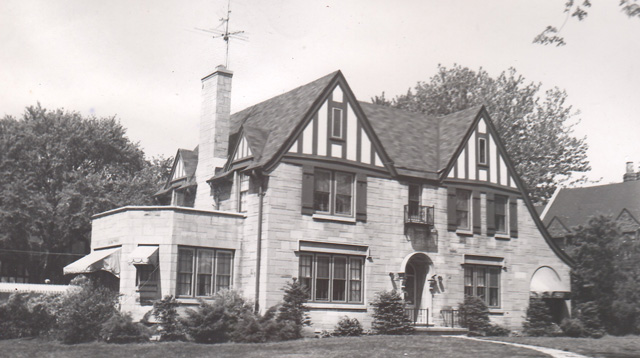
1336 Three Mile Dr – 1929 – commissioned by Andrew E. Staffani
This is a distinctive Mediterranean style residence, with a red tile roof, constructed from imported stone and clad in Indiana limestone. While it’s not clear who the architect is, the artist created a particularly distinctive home that features a living room with a 17’ high two-story high ceiling, a large dining room with a bay window, and a sunroom. The second floor has an open hallway with a balcony above the living room. The first three photos (below) are courtesy of © Indiana Limestone Company. Courtesy, Indiana Geological and Water Survey, Indiana University, Bloomington, Indiana.
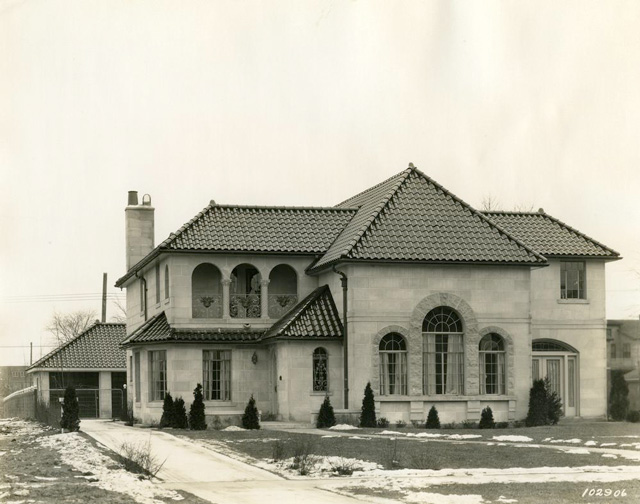

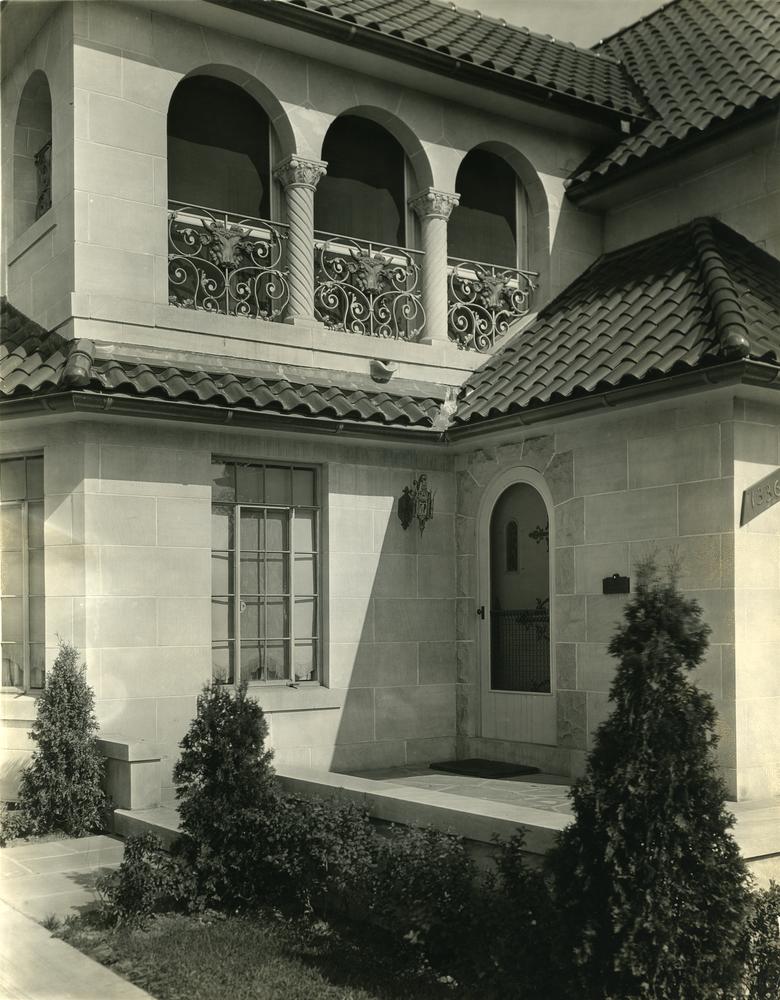
Aside from being used on residences in Grosse Pointe, Indiana limestone was an integral component of:
- Grosse Pointe Memorial Church
- Defer Elementary School
- Ambrose Church
- Robert Trombley Elementary School
In Detroit Indiana limestone was used on over 500 distinctive buildings, designed by some of Detroit’s most noted architects, including:
- The Detroit Athletic Club
- Jefferson Savings Bank
- Book Tower
- Detroit News building
- Penobscot building
Indiana limestone has helped build a community and has played a massive part in the architectural history of Grosse Pointe. It remains permanently on display on some of the finest homes and public buildings in the area – an “aristocrat building material” that made such a difference to the composition of a home.
*Photos courtesy of the Higbie Maxon Agney archives unless stated.
** Research, information, and data sources are deemed reliable, but accuracy cannot be fully guaranteed.
Written by Katie Doelle
Copyright © 2022 Katie Doelle

